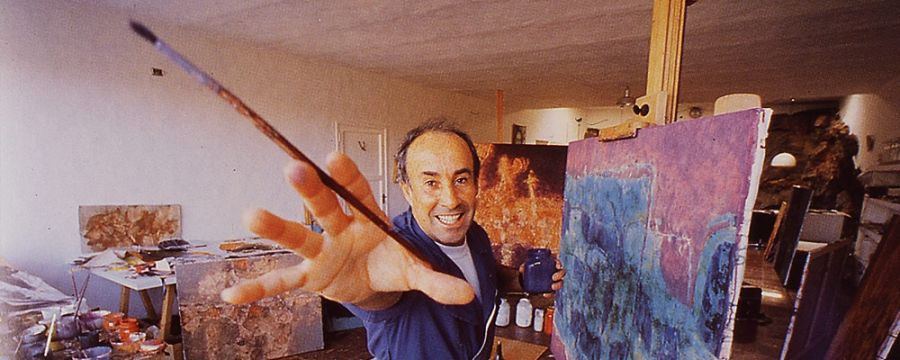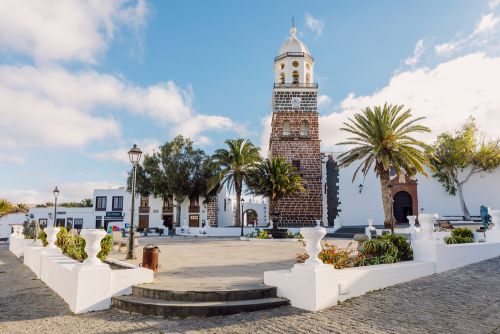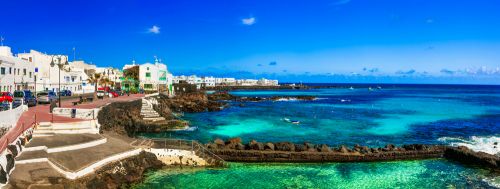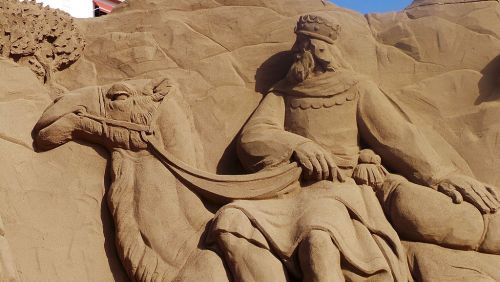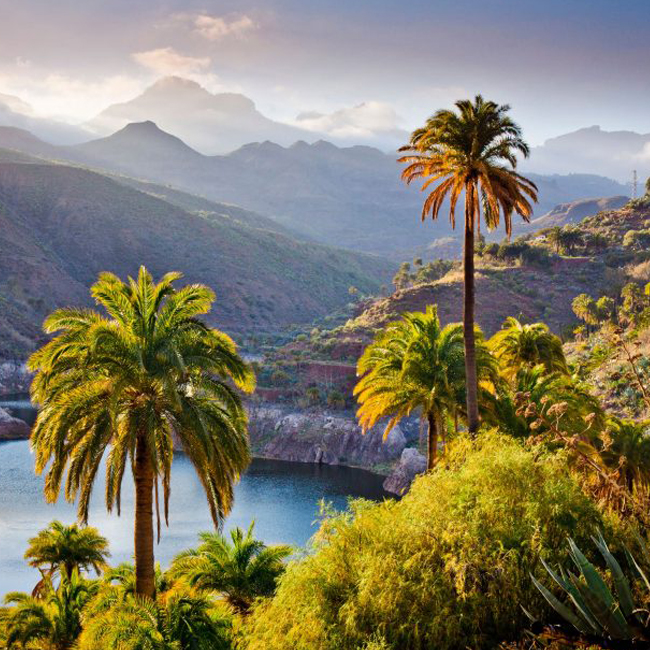Who was César Manrique and what does he mean for the Canary Islanders?


César Manrique Cabrera (1919-1992) was born in Arrecife, Lanzarote. This magnificent painter, sculptor, architect and multidisciplinary artist studied in Madrid and, after a few years exhibiting his work all over the world, he moved to New York, a mecca for artists in the 1960s.
He then settled permanently on his native island, where he began his most personal and ambitious project: using the island itself as an environmental canvas. The love he felt for his homeland is reflected in his art, a total respect for the natural environment and for the local architectural tradition.
5 most important works by César Manrique

His artistic work followed the trends of his time, although his interventions on the Canary Islands stand out for exploring new practices. In them, the artist sought with his works a very respectful symbiosis and integration with the natural environment.
Cultural centres, interventions on the coast, gardens, viewpoints... the list is immense, and they all stand out for their originality and modernity. Most of them can be admired in Lanzarote, as well as in Tenerife, Fuerteventura, La Gomera and El Hierro.
1. Jameos del Agua (Lanzarote)
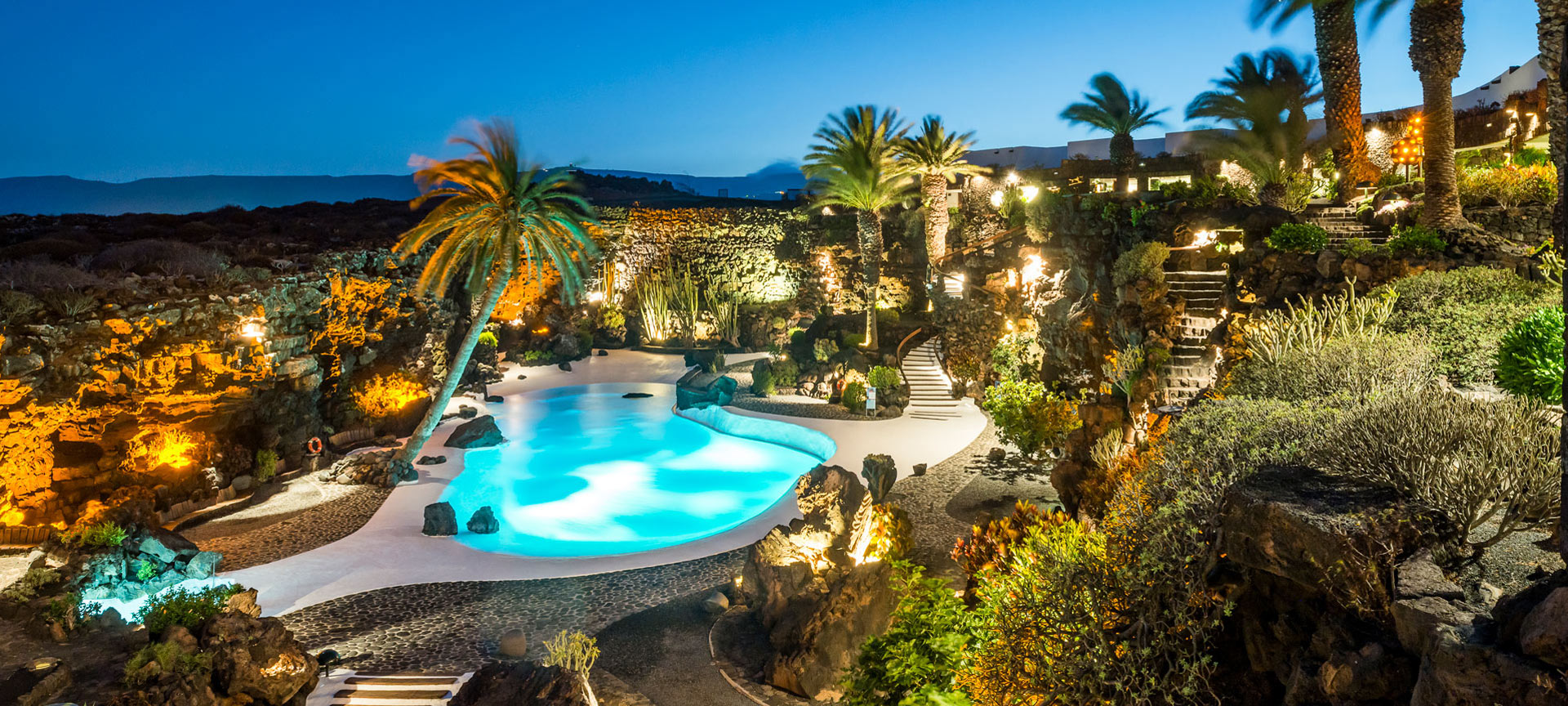
Jameos del Agua was the first Art, Culture and Tourism Centre created by César Manrique and one of the most obvious examples of harmony between art and nature. The interior of the volcanic tunnel was used to create a natural auditorium of great beauty.
The Malpaís de La Corona is its home, which is joined by a palm garden with an artificial lake and the Casa de los Volcanes museum, a volcanological centre of scientific and cultural interest.
In addition, its natural lake in the cavern itself is slightly illuminated by the sun and is home to a species of albino crab that is unique in the world. It is undoubtedly one of the most characteristic works of the Lanzarote artist.
2. Lago Martiánez (Tenerife)
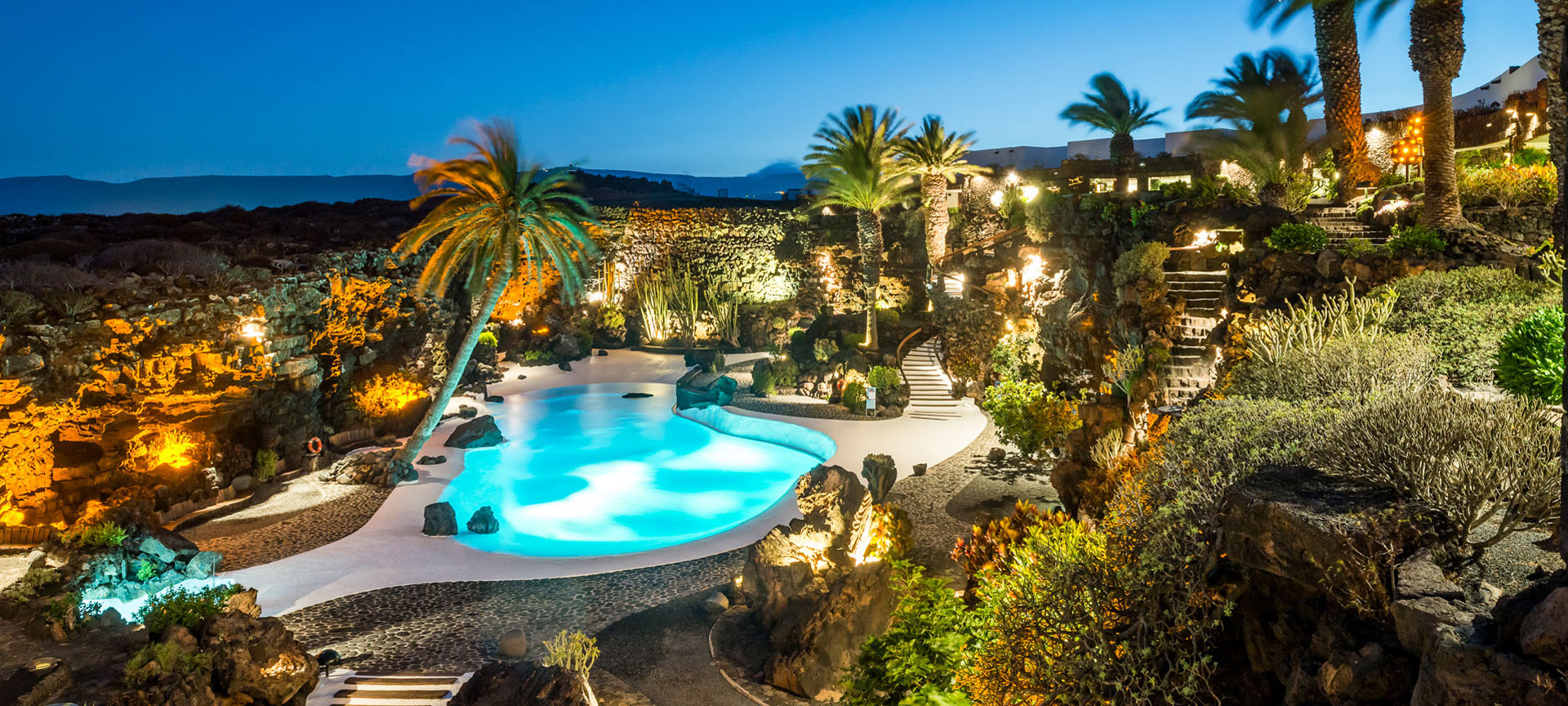
Sitting on the coast of Puerto de la Cruz, Lago Martiánez is a wonderful example of architecture open to the sea. This lagoon in the shape of a gigantic emerald has five islands, gardens, terraces and restaurants under the watchful eye of Mount Teide.
The terraces and gardens of native flora contribute to the exotic atmosphere, and the whole complex, which includes several sculptures by the author, is perfectly in keeping with traditional Canarian architecture.
This Asset of Cultural Interest with the category of Historical Garden offers four swimming pools for adults and another three adapted for children, all surrounded by sunbathing areas equipped with sun loungers and parasols.
3. Mirador del Río (Lanzarote)

The Mirador del Río viewpoint, in the north of Lanzarote, is an authentic work of art on the top of an imposing cliff. From its wide railing, the small islets of the Chinijo Archipelago emerge, separated by the strait that gives the viewpoint its name.
The group of islets (La Graciosa, Alegranza, Montaña Clara, Roque del Este and Roque del Oeste), the sea, the sky and the depth of the cliffs transmit an unparalleled peace with perfect volcanic cones and an amalgam of ochre and beige colours.
Here, the volcanic rock of the surroundings perfectly blends with an interior that envelops the soul with its curved, almost organic shapes and a surprising use of light. Visitors have information panels, telescopes and large outdoor recreation areas.
4. Parque Marítimo César Manrique (Tenerife)

The Parque Marítimo César Manrique maritime park is located in Santa Cruz de Tenerife, with unbeatable views of the Tenerife Auditorium, the Palmetum botanical garden and the sea. It is a leisure centre easily accessible by car and public transport in the heart of the capital of Tenerife.
In addition to parking areas, its facilities include three seawater swimming pools, restaurants, terraces, changing rooms with hot water and solarium areas, making it the ideal place to enjoy a different kind of day at the beach in the middle of the city.
Natural elements such as volcanic rocks, palm trees and ornamental plants were used in its design, together with salt water cascades, all of which are adorned with César Manrique's unmistakable wind toys.
5. Jardín de Cactus (Lanzarote)
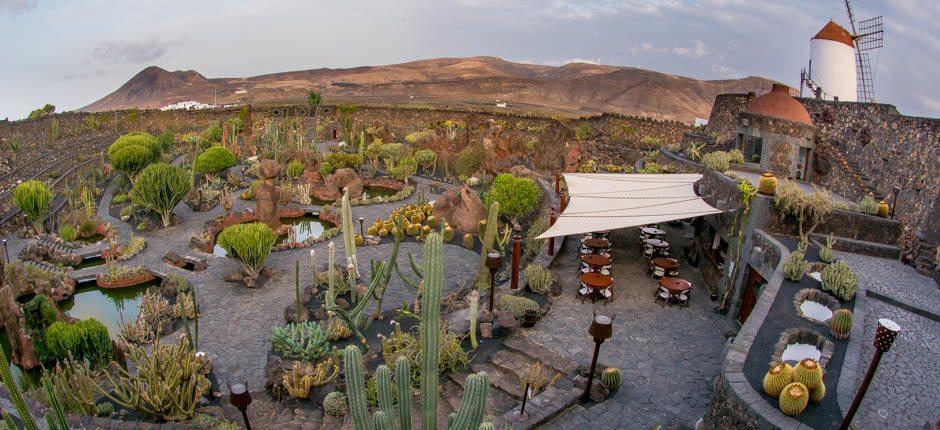
In the north of Lanzarote is the Jardín de Cactus garden, home to more than 1,400 species of cacti from all over the world. This cactarium, the artist's latest work on the island, is easily recognizable from the road thanks to the large metal cactus at the entrance.
Any visitor who enjoys the closeness of nature will find its cobbled paths a relaxing place to stroll and enjoy the Lanzarote landscape, whose surroundings are completely integrated into the island's landscape.
Its windmill stands out against the black stone, being one of the best places to capture a panoramic view of the garden, which was built in the form of an amphitheatre. It is, without a doubt, a magical place amidst a totally volcanic landscape.
César Manrique Foundation, the museum dedicated to the artist
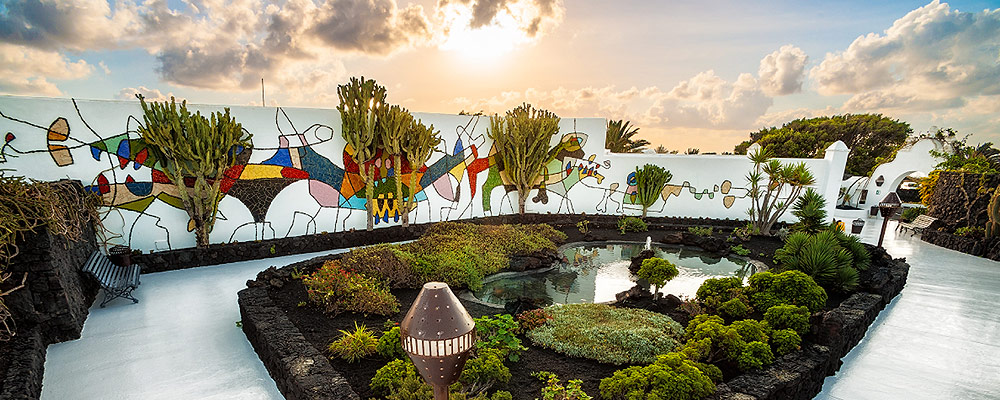
César Manrique's enormous commitment to his work and his ecological vision led him to transform a set of volcanic bubbles into his own home, Taro de Tahíche, where he lived for many years.
Today it houses the César Manrique Foundation and you can wander through its rooms decorated with works from the artist's private collection, the best way to get an insight into the mind and talent of this unique genius.
César Manrique set out to make Lanzarote the most beautiful island of all. And he tried to do so by mixing art with nature, always respecting the landscape and local traditions, as can be seen in this beautiful spot.
Where to stay in Lanzarote to enjoy the magic of César Manrique

Since most of César Manrique's artistic work is on the island of Lanzarote, there is no better way to enjoy his legacy than staying at one of the best hotels in Lanzarote: HD Beach Resort & Spa.
It is a 4-star all-inclusive resort located on the beachfront, which makes it the ideal place for families with children who want to enjoy an active holiday practising sport.
Its facilities include a gym with professional attention, water sports centre, spa with sauna, Turkish bath, chromotherapy, hot beds, massages... It is the best place to disconnect and enjoy a cultural day on the work of César Manrique.
